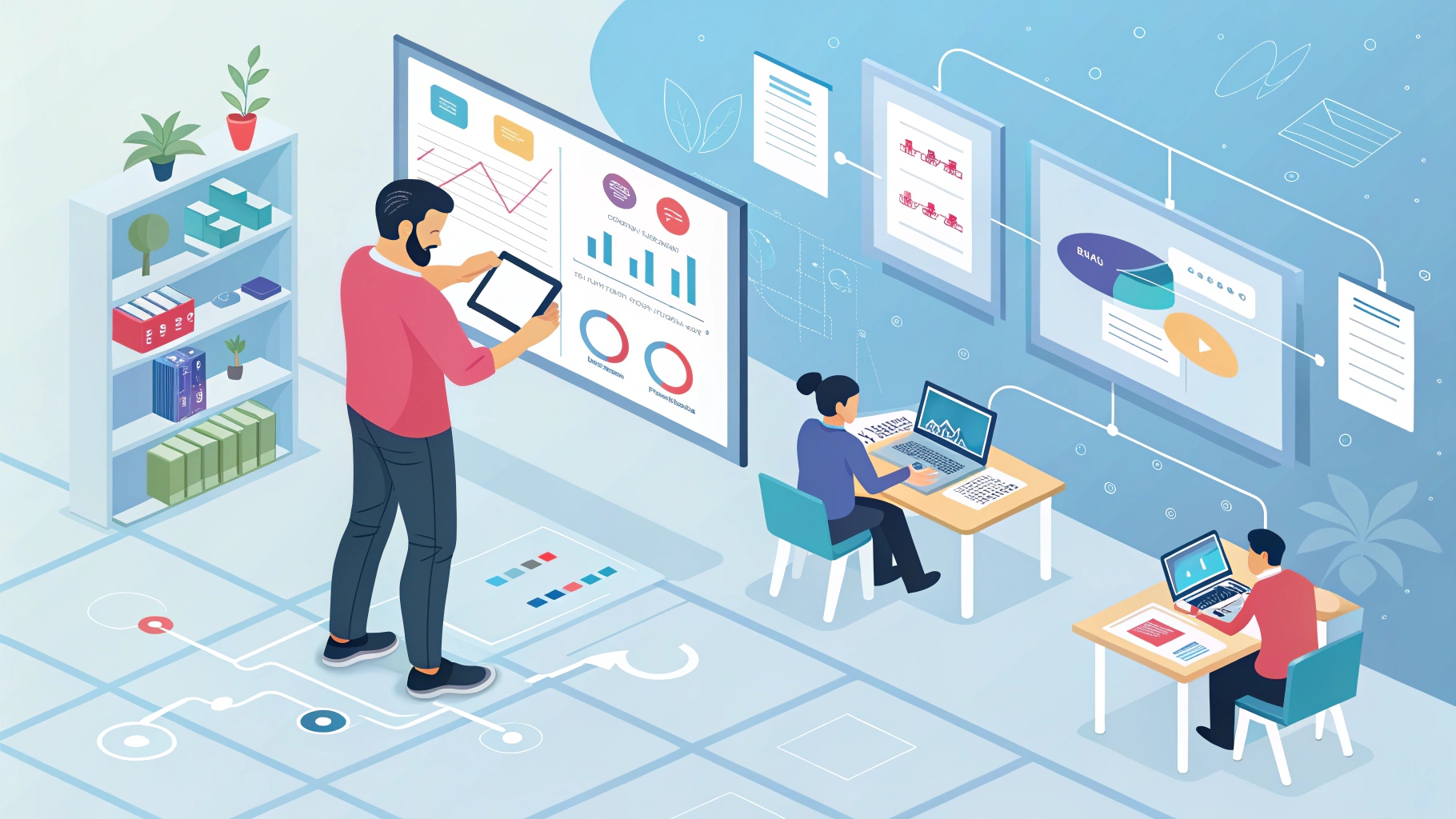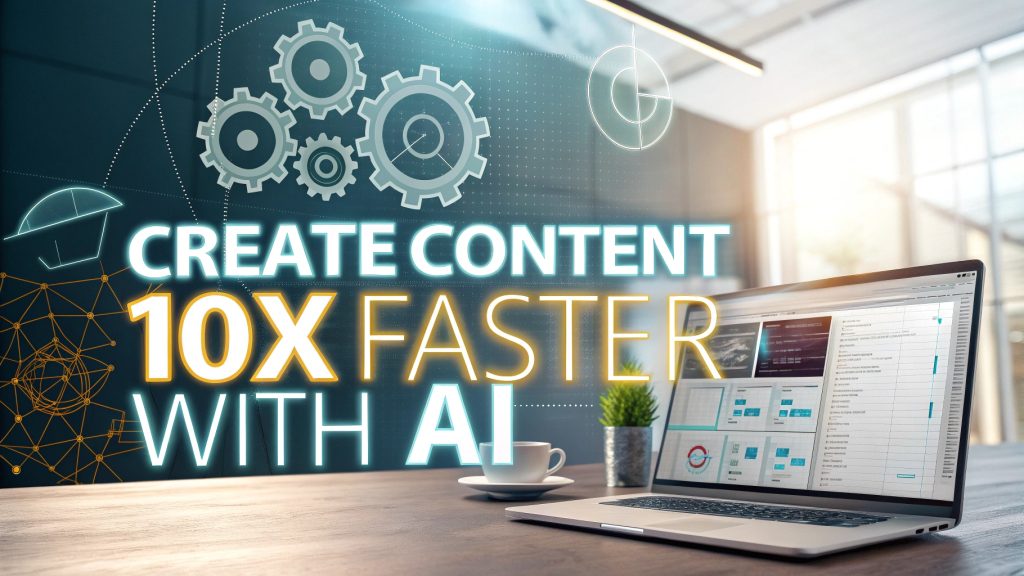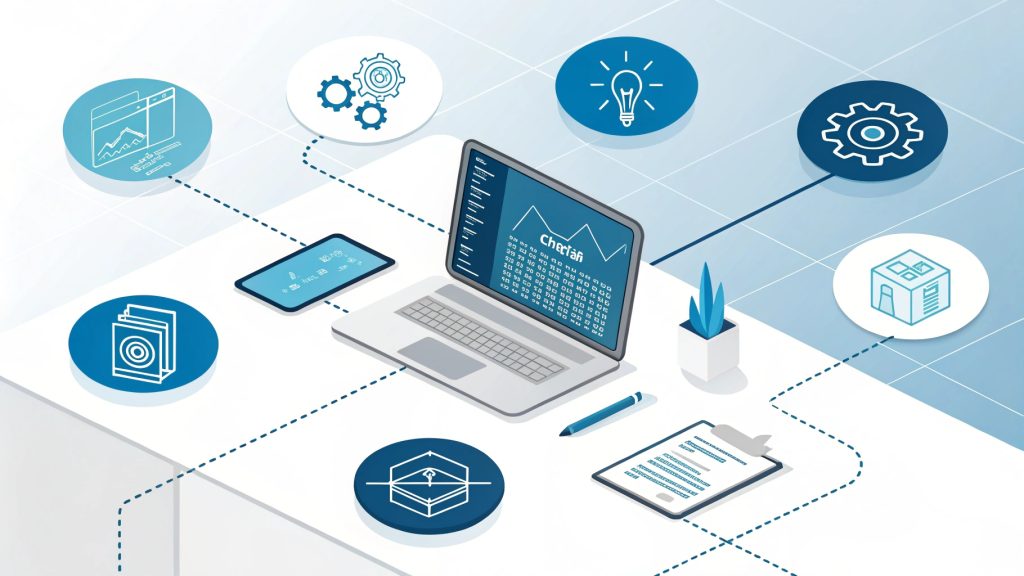
Behind every successful blog, YouTube channel, or brand newsroom lies one essential truth : great content is no accident, it’s the result of a well-oiled planning and editorial process. But editorial workflows can often feel like a maze of spreadsheets, status updates, and missed deadlines. That’s where AI is stepping in to revolutionize the content operations game.
From ideation to analytics, AI tools now assist editorial teams and solo creators in automating repetitive tasks, streamlining collaboration, and staying ahead of content trends.
This article is part of our content on AI Productivity, supporting our in-depth guide, Create content 10x faster with AI : Tools, methods, and use cases. It also connects with related articles on AI tools for content creation and AI-powered SEO.
Let’s dive into how AI transforms your editorial pipeline from cluttered to streamlined.
1. AI for topic ideation and trend detection
Before a single word is written, every content project starts with an idea. But generating fresh, relevant topics consistently is a real challenge, especially when you’re working across niches or platforms. AI tools now analyze massive datasets to suggest ideas based on:
- Trending topics in your industry
- User questions from search engines and forums
- Content gaps in your existing strategy
- Seasonal opportunities
This means you can instantly access a bank of relevant, data-driven content ideas, all tailored to your niche, audience, and publishing goals.
2. Building smart content calendars
Planning a content calendar manually is time-consuming, assigning writers, setting deadlines, checking status updates. AI tools now assist with :
- Auto-scheduling based on publishing frequency and campaign goals
- Tagging content by type, audience, funnel stage, or keyword
- Tracking progress with AI-generated reminders and summaries
- Prioritizing ideas based on predicted performance or relevance
Whether you’re managing a team or flying solo, AI-powered platforms keep your editorial calendar organized and strategic, not chaotic.
3. Editorial task automation and workflow management
AI integrations in tools like Trello, Notion AI, and Airtable allow content managers to automate repetitive steps in the publishing workflow:
- Automatically assign tasks when a new content idea is added
- Generate progress reports and summaries with AI
- Suggest tags, metadata, or even titles based on draft content
- Sync with CMS systems for easier publication
This creates a seamless pipeline from idea to execution, reducing human error and freeing up time for strategic work.
4. AI for content briefing and collaboration

Creating content briefs is a time drain, but without one, quality suffers. AI now helps build dynamic, standardized briefs by pulling:
- SEO keyword data from tools like Semrush or Surfer
- Competitor headlines and structure
- User intent-based prompts
- Draft outlines, CTAs, and internal link suggestions
The result? Writers receive briefs that are rich, clear, and backed by search data. Editors spend less time rewriting and projects move faster.
This also improves cross-functional collaboration between marketers, writers, and designers.
Curious about combining AI and SEO brief building? Read AI-Powered SEO: How to optimize your content for search engines for techniques you can adapt for the context.
5. Analytics and optimization loops with AI
Your editorial workflow shouldn’t stop at publishing. AI also helps close the loop by monitoring content performance and suggesting optimizations:
- Alerting you when a post drops in rankings
- Recommending updates based on shifting trends
- Summarizing top-performing content in dashboards
- Scoring your editorial velocity and topic diversity
Instead of guesswork, your next editorial decisions are driven by live insights and predictive analytics.
6. Collaboration at scale
AI doesn’t just assist individuals, it scales collaboration across growing content teams. Platforms with AI can:
- Generate weekly editorial summaries
- Flag duplicate content or overlapping topics
- Provide real-time sentiment analysis on drafts
- Offer tone/style consistency checks before publication
This is especially powerful for remote teams or agencies juggling multiple client campaigns.
Want to go deeper? Our article how AI transforms content planning explores full-cycle editorial AI for high-volume environments.
Plan better, publish smarter
Editorial planning has long been the bottleneck in content marketing. But with the power of AI, it’s no longer just a calendar, it’s a smart, dynamic system that adapts, optimizes, and accelerates your entire content lifecycle.
To recap, here’s your AI-powered content productivity journey so far :
- Start with Create content 10x faster with AI for the full framework
- Use Top AI tools for streamlining content creation to generate high-quality drafts
- Optimize content using AI-Powered SEO tools and techniques
- And now, organize it all with smart editorial workflows like the one you just discovered


